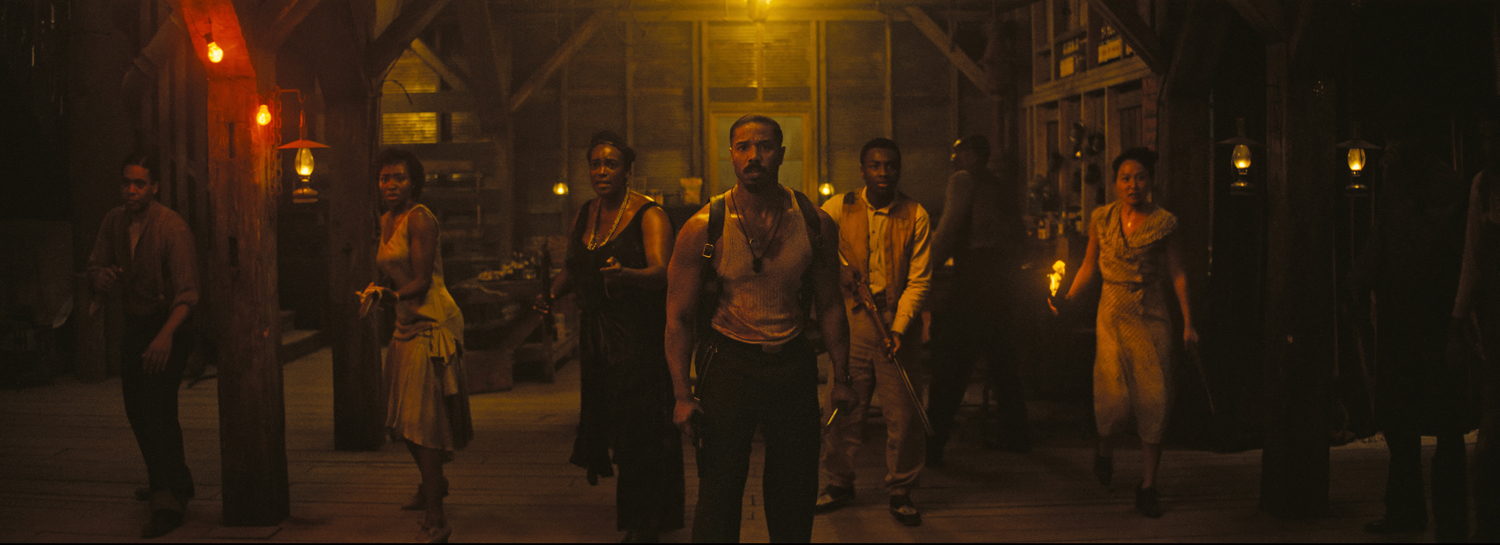
Jayme Lawson as Pearline, Wunmi Mosaku as Annie, Michael B. Jordan as Elijah "Smoke" Moore, Miles Caton as Sammie Moore and Li Jun Li as Grace Chow in a scene from "Sinners." (Photo courtesy of Warner Bros. Entertainment Inc.)
Not so fast, moviegoers. The arrival of “Thunderbolts*,” Marvel's antihero ensemble action film, in theaters this weekend marks for too many people the beginning of the summer movie season. To call that declaration premature is an understatement of seismic proportions.
The calendar still says spring from where this critic is sitting, and this past month brought a wealth of riches to South Florida screens, and not just at back-to-back film festivals. A handful of commercial releases have helped kick-start a sluggish movie year, with one major studio film currently dominating the conversation and showing no signs of letting up.
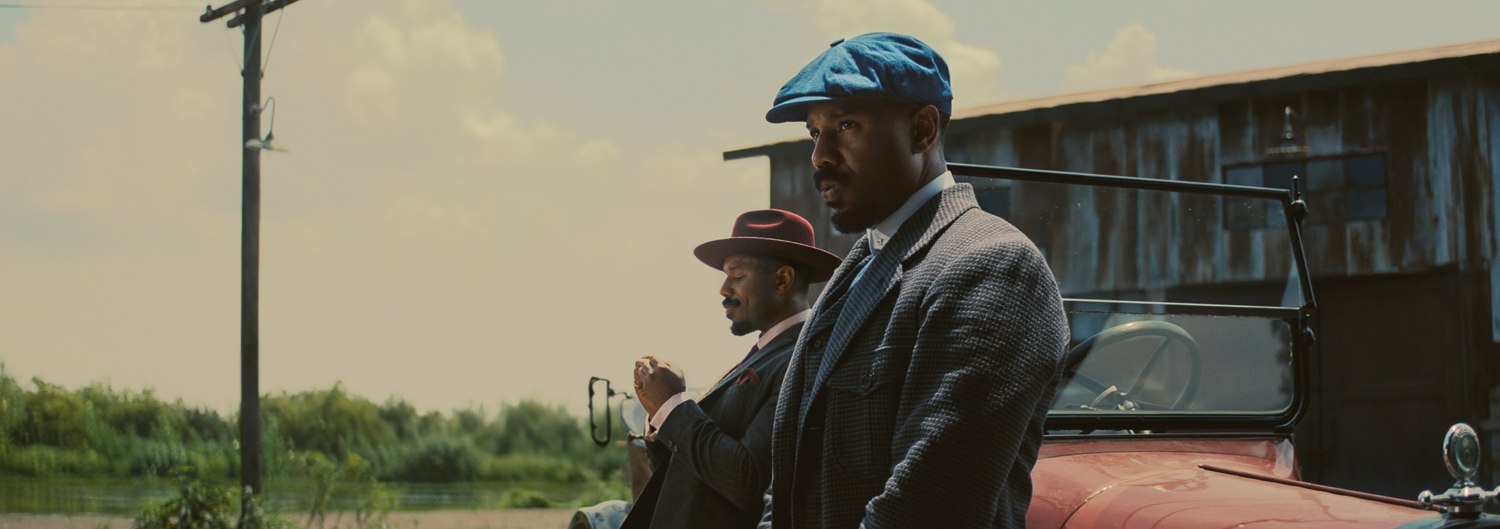
Michael B. Jordan as Elijah "Smoke" Moore and Michael B. Jordan as Elias "Stack" Moore in a scene from "Sinners." (Photo courtesy of Warner Bros. Entertainment Inc.)
To which I say, yes, the words of praise are mostly warranted, but the genre-splicing release in question is far from the only noteworthy option for moviegoers tired of the intellectual property onslaught clogging up their neighborhood multiplex. So, before the social media chatter turns to the MCU's reluctant do-gooders, let's take a look at four April releases that stretch the film medium's possibilities. Three of them come from seasoned directors who put their personal stamp in the stories they tell, and one comes from a newcomer showing a disarming devotion for the 1980s, down to the way his feature was made. And yes, one of these is the aforementioned buzzy “it” movie, so let's start there.
“Sinners”: Vast, expansive and full-throated, this epic genre exercise from writer-director Ryan Coogler is a whole lot of movie, predominantly for the right reasons. The tale of twin brothers who return to their Mississippi hometown to open a juke joint screams “CINEMA” at the top of its lungs, and Coogler, working with a terrific ensemble cast, has the chops to back up his boundless ambition.
It's October 1932, and Elijah and Elias Moore (Coogler muse Michael B. Jordan) are about to close a business deal with a (white) property owner who can barely mask his contempt for these uppity siblings with the natty outfits and an aversion to intimidation. The Moores, better known by their nicknames Smoke (Elijah) and Stack (Elias), think they're making a sound investment, and Coogler is in no hurry to let us see the consequences.
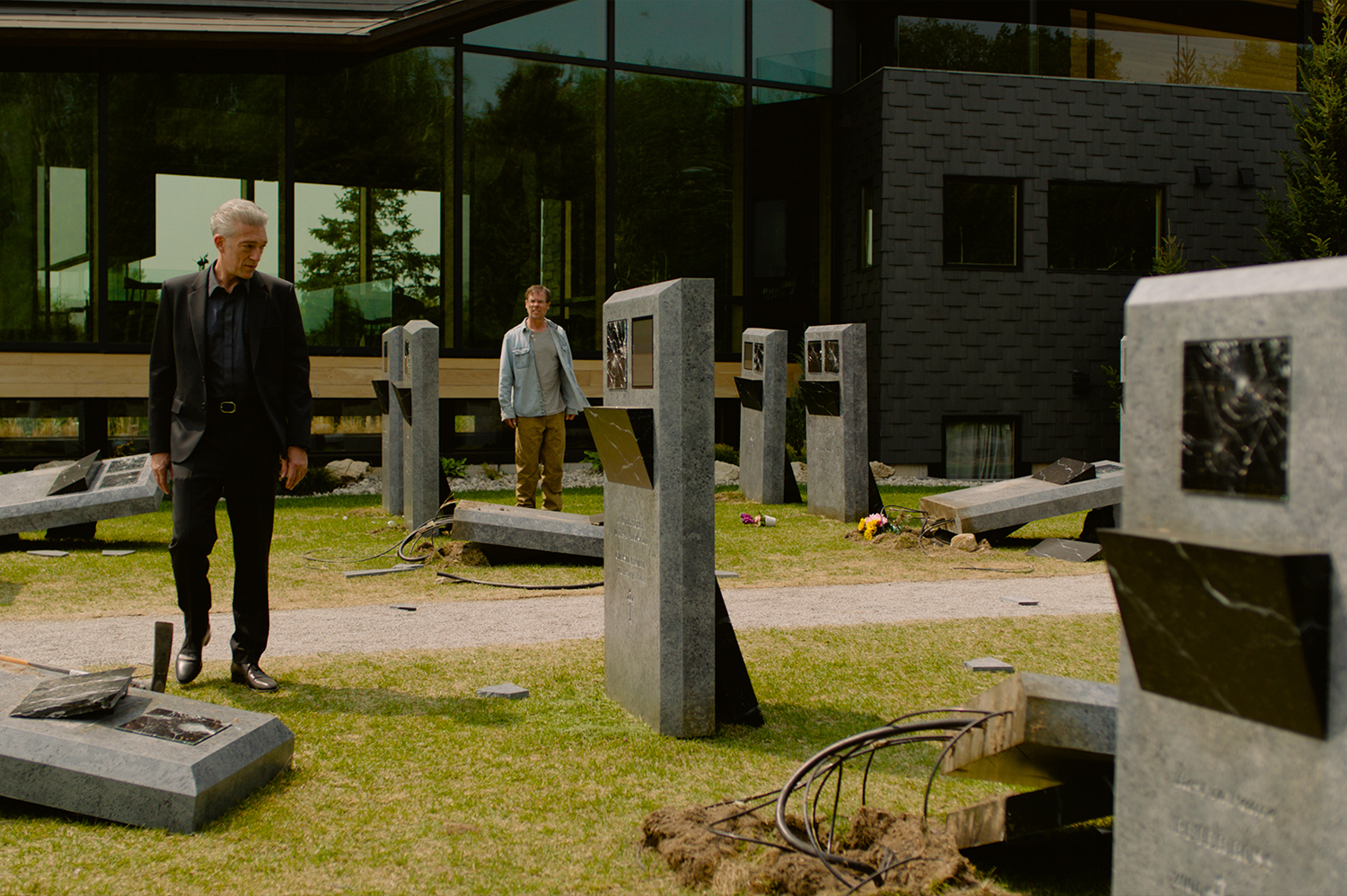
Vincent Cassel as Karsh Relikh and Guy Pearce as Maury in a scene from "The Shrouds." (Photo courtesy of Sideshow and Janus Films)
Rather, for roughly half of the film's briskly paced 137 minutes, the director maps out his territory, etching a vivid portrait of the Deep South from the point of view of the Black and Asian residents living under the thumb of the Jim Crow era, and the two businessmen (okay, gangsters) who aim to seize their slice of the American Dream.
Coogler gradually doles out information about Smoke and Stack. After fighting for Uncle Sam in World War I, they moved to Chicago, where things apparently went sideways, driving home the notion that racism is a scourge with tendrils that extend north of the Mason-Dixon line. Coogler and Jordan, very good in both roles, also resist the notion of portraying the more pragmatic Smoke as the Good Twin and the more reckless Stack as the Bad Twin. The protagonists' lust for financial success extends to their love lives, as Smoke reconnects with old flame Annie (the formidable Wunmi Mosaku), and Stack unexpectedly comes face to face with Mary (Hailee Steinfeld), turning “Sinners” into a far hornier movie than what you're used to seeing from a major studio on this scale.
Coogler also effectively color coordinates the brothers' personalities: blue clothes for Smoke, red for Stack, the latter a harbinger of the bloodbath to come. Because after it establishes its characters, a colorful gallery of personalities and temperaments, “Sinners” bares its fangs as an unapologetically pulpy vampire flick with shades of “From Dusk Till Dawn,” that exhilarating mid-1990s collaboration between Robert Rodriguez and Quentin Tarantino.
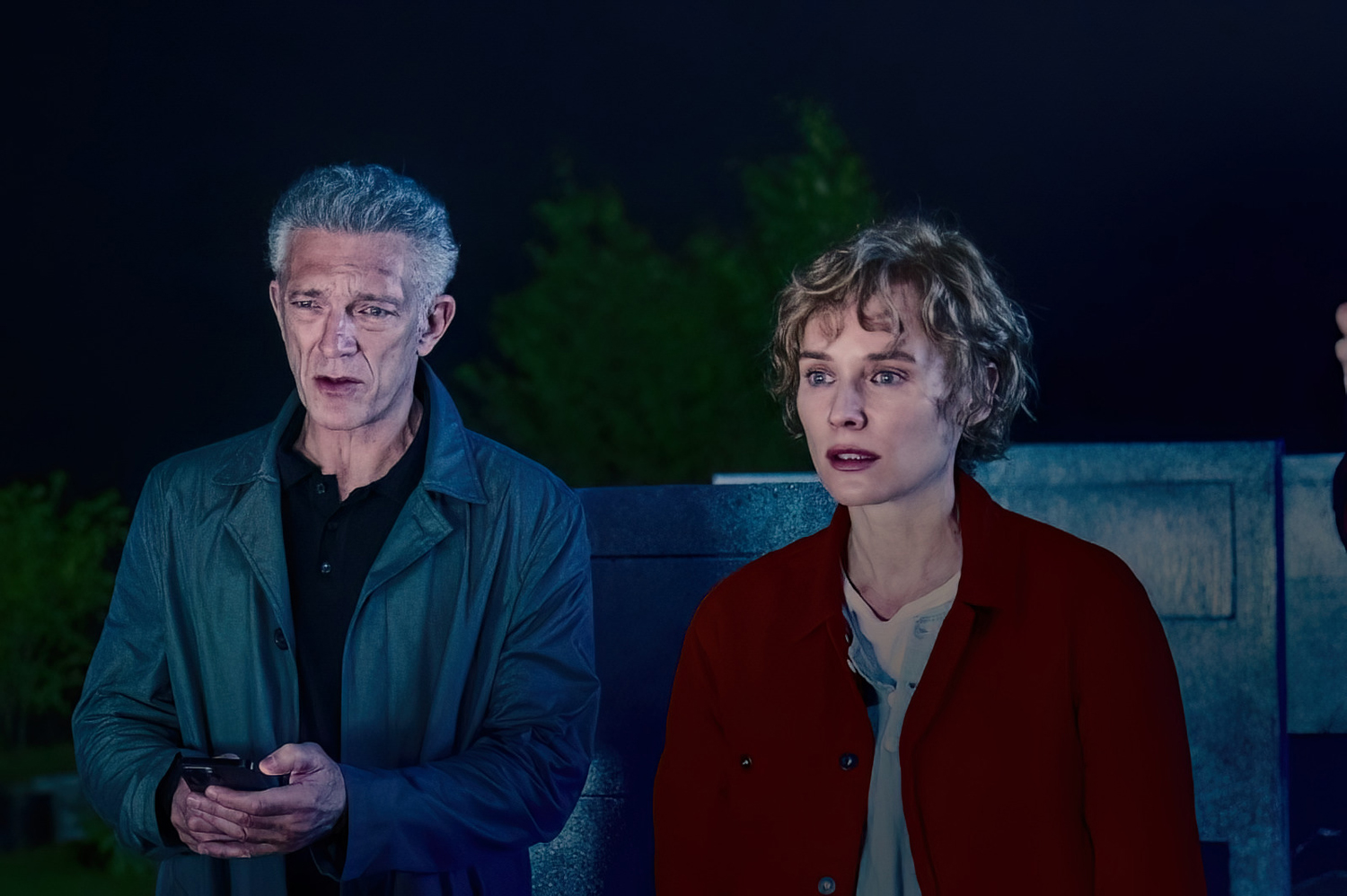
Vincent Cassel as Karsh Relikh and Diane Kruger as Terry Gelernt in a scene from "The Shrouds." (Photo courtesy of Sideshow and Janus Films)
The carnage comes as the Moores' establishment opens for business, at the hands of a trio of bloodsuckers led by the seductive Remmick (English actor Jack O'Connell). The climactic gorefest satiates viewers' bloodlust without undermining the thematic heft that precedes it, but it also turns “Sinners” into a more conventional undertaking than what its first half promises. It's also hobbled by at least one climax too many, with a particular shoot-'em-up sequence that tips its hat to Tarantino's “Inglourious Basterds” coming across as something that, while expertly staged, just makes the film feel longer than it should.
Looking on the bright side, the film, though it deals with prejudice and Black ownership, doesn't feel didactic or preachy the way “Fruitvale Station,” Coogler's debut feature, often did. To bring his vision to the screen, the “Creed” director shot the bulk of the film in super-duper wide Ultra Panavision, with several sequences in IMAX, making the most of the latter format's boxy, tall frame. The aspect-ratio shifts that viewers who see the film in IMAX auditoriums will experience are seamlessly integrated into the fabric of the film.
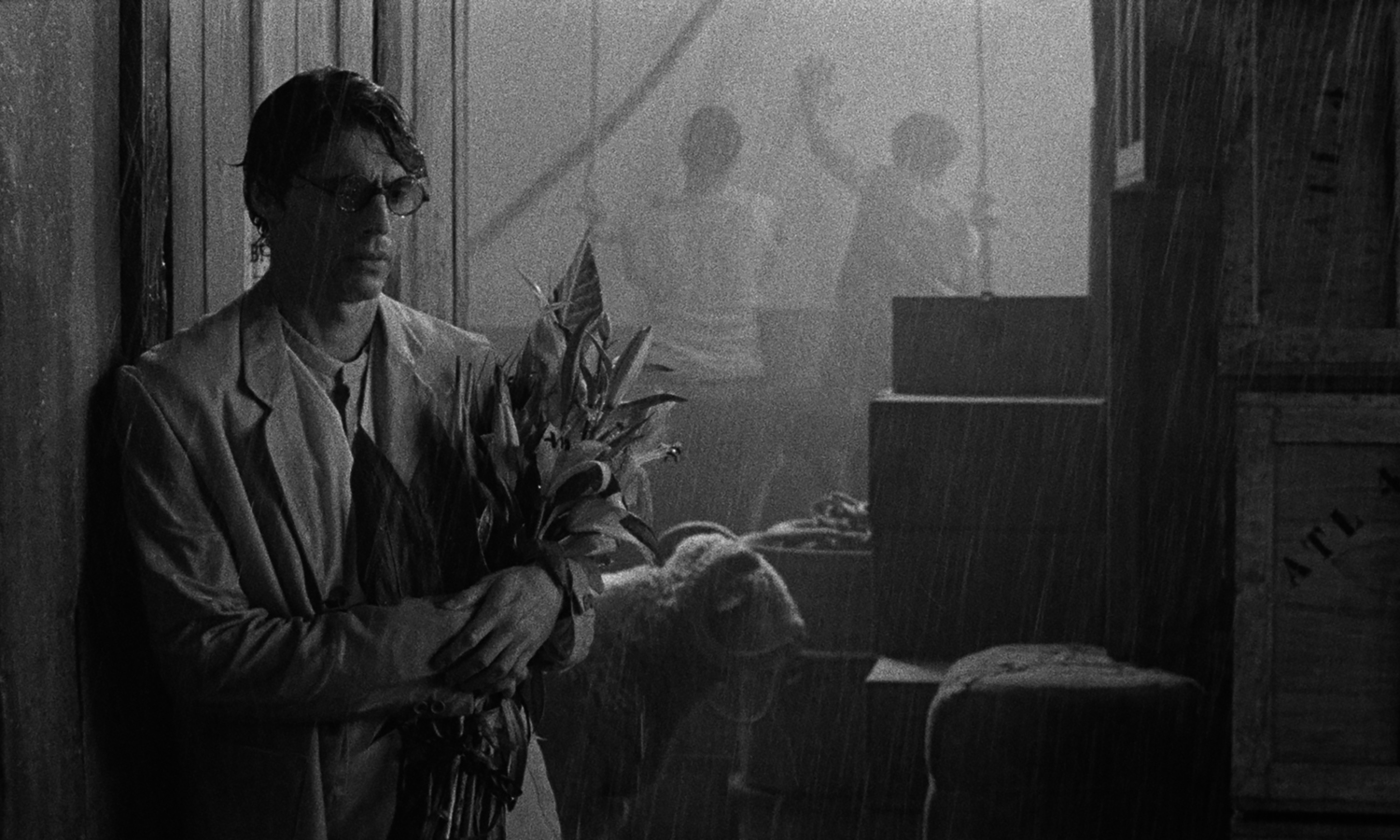
Gonçalo Waddington as Edward Abbot in a scene from "Grand Tour." (Photo courtesy of MUBI)
And the conduit Coogler uses to tie his ideas and narrative strands together, more so than the unholy threat of thirsty vampires, can be summed in three words: Black music matters. In the film's boldest sequence, Coogler and cinematographer Autumn Durald Arkapaw erase the walls of space and time to look at the way music has become a lifeline for Africans and African Americans across the ages, from centuries ago to the present day.
Too much? Perhaps, but there's no doubt that despite the film's crossover appeal, Coogler made “Sinners” with Black audiences in mind, even more so than his “Black Panther” films. As such, the cultural moment that this overstuffed fusion of thrills, mayhem, erotic gyrations and showstopping blues performances has made happen goes beyond just one film, even one as big as “Sinners.” It doesn't quite live up to the hyperbolic praise being heaped upon it, but nevertheless, this is a visceral Molotov cocktail that gets you drunk on movies again.
“The Shrouds”: If it sounds morbid, that's because it is. Karsh Relikh, the successful businessman at the center of David Cronenberg's atmospheric character study, has devised a unique way for mourners to grapple with the loss of a loved one: a tombstone that allows you to monitor the decedent's decay in real time.
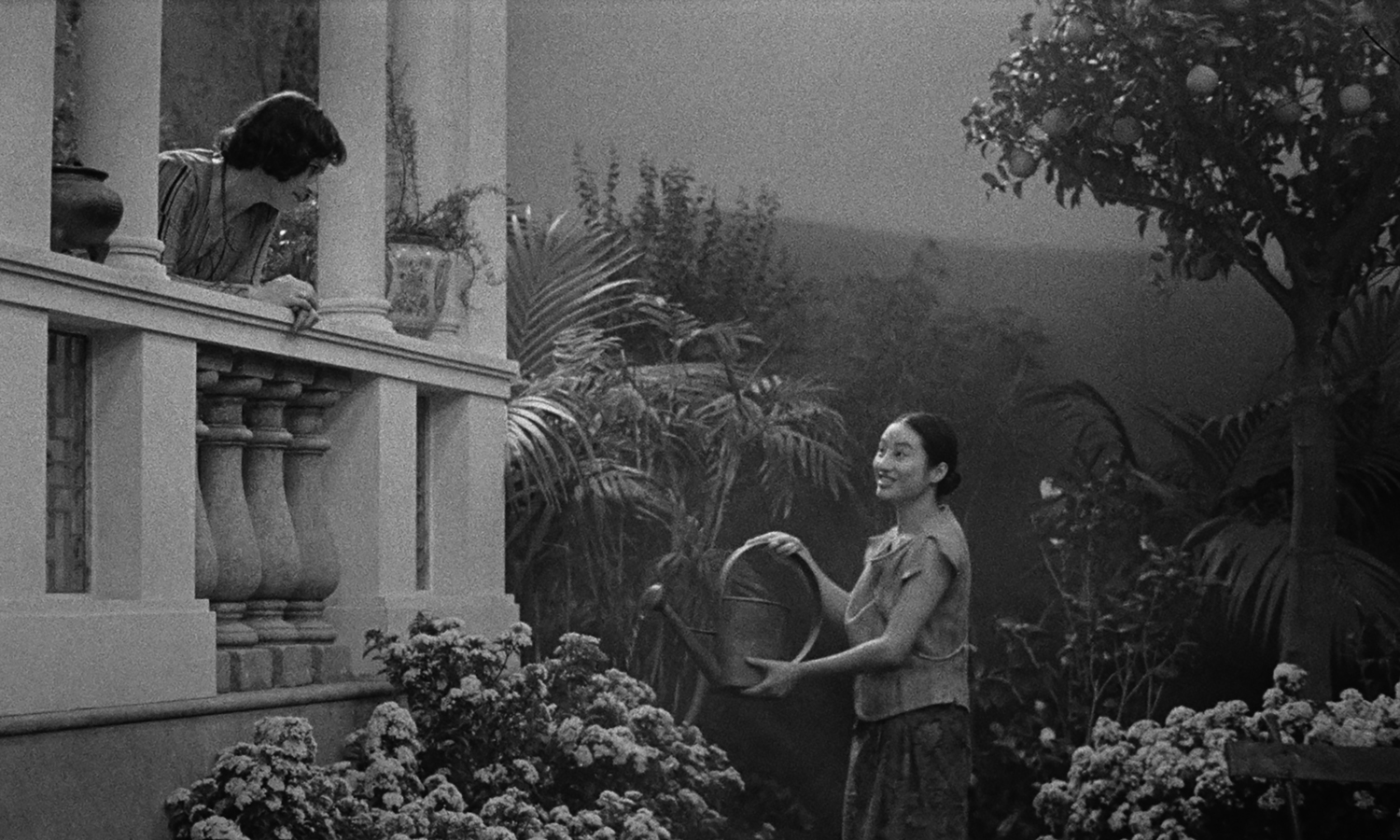
Crista Alfaiate as Molly Singleton and Lang Khê Tran as Ngoc in a scene from "Grand Tour." (Photo courtesy of MUBI)
That's just creepy, but as Karsh (Vincent Cassel, looking uncannily like the filmmaker) casually shows off his late wife Becca's rotting body to his (understandably disturbed) lunch date, Cronenberg makes the moment absolutely beautiful as well. The “Videodrome” and “Scanners” auteur attempts a bracing balancing act in his portrait of grief, inspired by the death of his wife Denise in 2020: mournful and sobering, yet imbued with the director's trademark dry humor. Its wit is suffused with melancholy, then leavened by gallows laughs. It's the kind of high-wire act that could easily give viewers whiplash, but Cronenberg pulls it off, and he makes it look easy.
For at least its first hour, “The Shrouds” makes you certain you're viewing Cronenberg's magnum opus, a two-hour summation of his career-long fixations and kinks. Karsh's world, you see, is about to be upended by an act of vandalism targeting several of his state-of-the-art graves, which allow viewers to look at their dearly departed's cadavers via the titular garments, its fabric able to create a tactile 3D image of the bodies wrapped in them.
But as the movie enters Hour 2, the corporate intrigue begins to take up more and more screen time, which would not be an issue if it didn't grow increasingly silly. Much more effective are the scenes where Karsh interacts with Soo-Min (Sandrine Holt), the wife of a CEO who's interested in sponsoring a proposed GraveTech location in Hungary, as well as his scenes with Terry, Becca's sister, and a handful of eerie dream sequences involving Becca that are tender and disturbing in equal measure. The grieving widower allows himself to feel … insatiable lust? Yup, Karsh gets his groove back and gets jiggy with it.
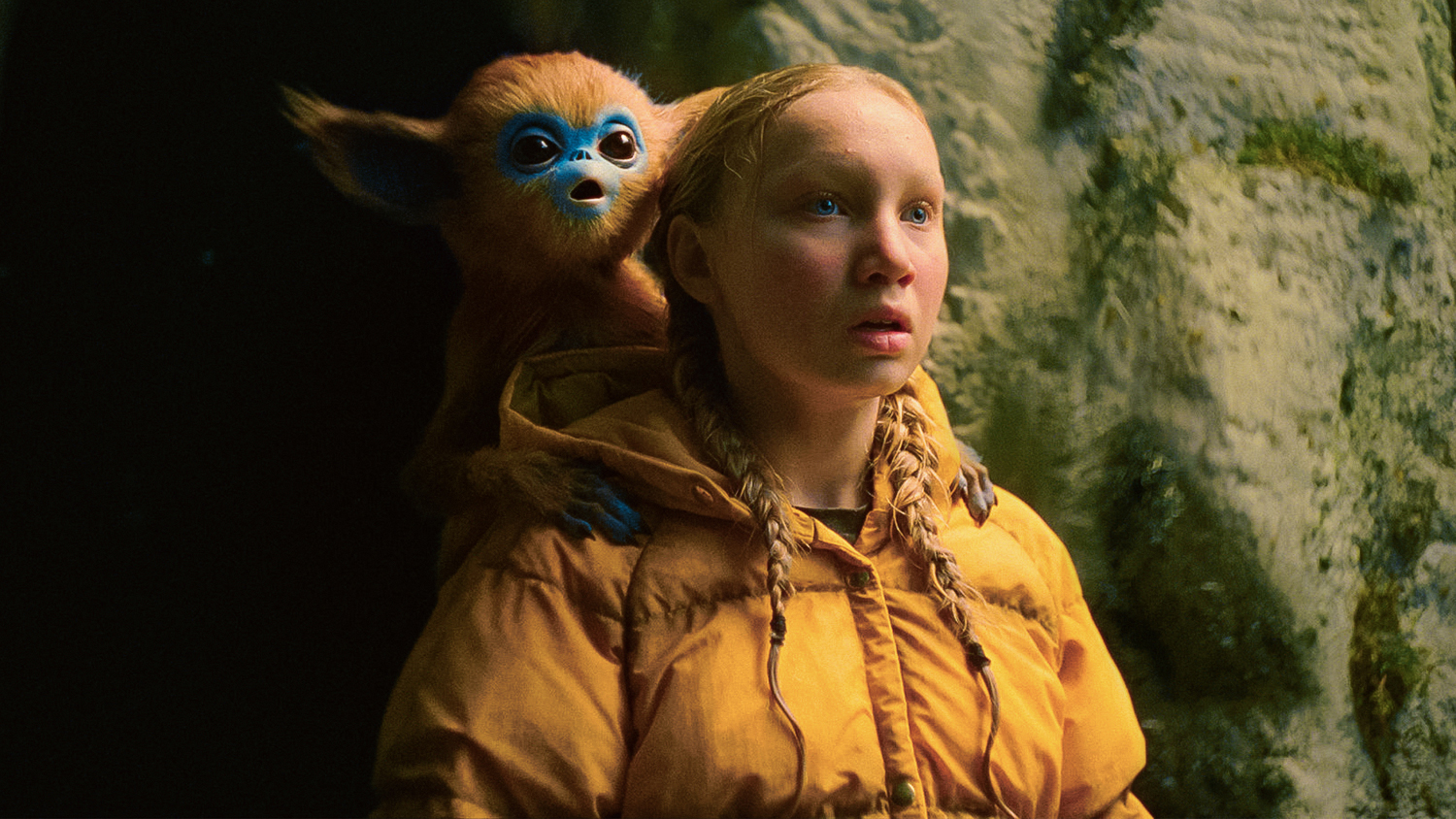
Helena Zengel as Yuri and Paul "The Birdman" Manalatos voices The Ochi in a scene from "The Legend of Ochi." (Photo courtesy of A24)
Cassel is matched step by step by Holt and the luminous Diane Kruger, a triple threat as Becca, Terry and the voice of Hunny, the AI assistant with a goofy sense of humor. Rounding out the cast is a disheveled-looking Guy Pearce as Maury, Terry's ex and the IT guy who coded GraveTech's security and created Hunny. It doesn't take a computer genius to figure out who's responsible for disrupting Karsh's life, but “The Shrouds” is too hung up on its high-tech offenses for its psychosexual layers to resonate. Still, the film is expertly crafted, down to another top-notch collaboration with composer Howard Shore. It's an intriguing footnote for a brilliant career rather than an all-timer, but it'll do.
“Grand Tour”: For a filmmaker who's firing on all cylinders, look no further than Miguel Gomes. The Portuguese director walked away with the Best Director prize at last year's Cannes Film Festival for this exquisitely rendered travelogue that sends a would-be bride across Asia, chasing after her jittery fiancé after being apart for seven years.
But “Grand Tour” is not your run-of-the-mill period romance. It might be set in the late 1910s, with a panicked Edward (Gonçalo Waddington), a civil servant representing the British Crown in Rangoon, staying one step ahead of the stubbornly dogged Molly (Crista Alfaiate), who's dead set on having her long-distance fiancé put a ring on it. But Gomes combines the scenes of his actors in period garb with documentary footage, in glorious black and white with a few shots in color, of their stops along the way, as they are today. Portuguese actors playing Brits, against a backdrop filled with contemporary signifiers like cellphones and SUVs. The anachronistic flourishes make for a city symphony of deliriously postmodern highs, a cine-collage of the highest order that squeezes Thailand, China, Japan and other countries into its crowded itinerary.
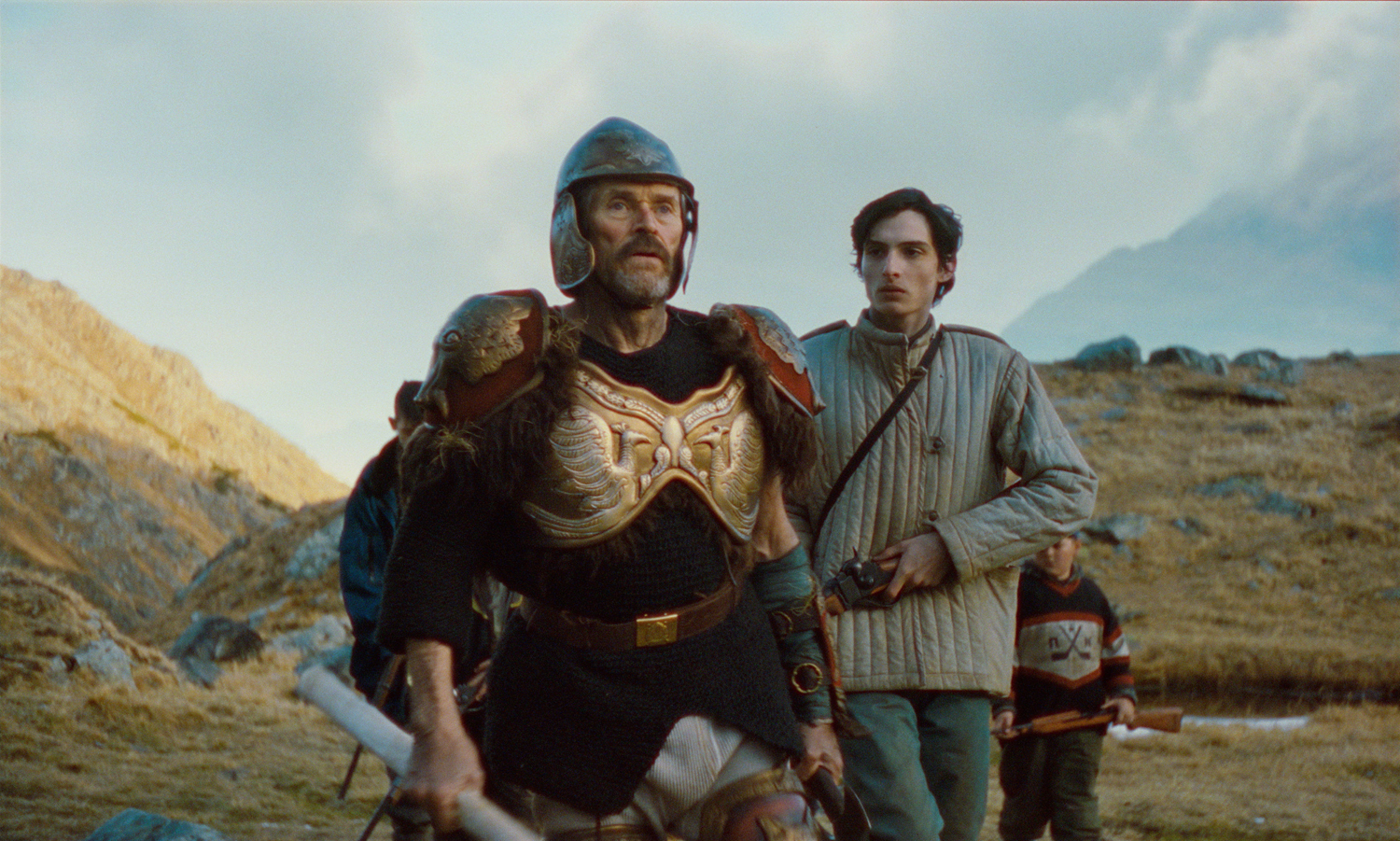
Willem Dafoe as Maxim and Finn Wolfhard as Petro in a scene from "The Legend of Ochi." (Photo courtesy of A24)
The film's first half is told from Edward's point of view, with offscreen characters narrating his story in the language of their respective country. The second half unfolds from Molly's perspective. Each portion adopts the personality of its corresponding lover: Edward's is frenetic, always on the go in a way that brings to mind Howard Hawks' “Only Angels Have Wings.” Molly's is more subdued by comparison, as her determined character is wooed by a pushy American cattle baron (Cládio da Silva) and befriended by the cattle baron's Vietnamese housekeeper (Lang Khê Tran).
Taken together, both of “Grand Tour's” halves do make the film feel, at 129 minutes, a tad long in the tooth, but they amount to more than the sum of their delightful parts: a paean to a nomad's restless spirit that weaves together the classicism of Hollywood's studio era during the 1930s and '40s with the anything-goes jolt that experimental cinema is capable of giving. A special alchemy is at work here, powered by Gomes' creativity and playfulness, but that doesn't prepare you for the existential rumination on display, or the narrative curveballs that the filmmaker throws our way. Loopy, exhilarating, formally nimble and utterly captivating, this is a joyous treasure trove for cinephiles, as well as one of the best films of the year.
“The Legend of Ochi”: After feasting on this auteur-driven banquet, dessert comes in the form of this nutty and evocative coming-of-age fantasy that makes a familiar story feel fresh due to the old-fashioned methods used to bring it to life, coupled with a deep affection for a specific moviemaking period.
The A24 release is set in Carpathia, a mystical island with one foot in the distant past and another in a more recent past that, judging by the cars and overall Eastern European vibes, feels uncannily like the 1980s but strangely timeless at the same time. The inhabitants of a secluded village live in fear of the Ochi, furry creatures that live in the forest and are known for their vicious attacks. It's not safe to be out after dark.
But tell that to Maxim (Willem Dafoe), a patriarch who takes his adopted son Petro (“Stranger Things'” Finn Wolfhard) and other local boys hunting for the reclusive beasts. Tagging along on her very first Ochi hunt is Yuri (“News of the World's” Helena Zengel), Maxim's sullen teenage daughter. That night's hunt does not go well, bringing more tension to a dysfunctional household that hasn't been the same since Dasha (Emily Watson), Yuri's mom, walked away.
Out looking to check the animal traps her father has set, Yuri encounters a baby Ochi. In terms of looks, it appears to answer the question, what if a Mogwai from the “Gremlins” movies and Ludo, the gentle giant from Jim Henson's “Labyrinth,” made a baby? Like its fellow critters, this mini Ochi is portrayed by a startlingly lifelike puppet. How lifelike is this hissing furball with teeth? It brings to mind the aforementioned characters from decades past, as well as Yoda in “The Empire Strikes Back,” in its sheer authenticity. One forgets this is not a living being.
Yuri notices the Ochi's leg is injured, so she takes it home with her, then decides to throw caution to the wind and take it back to its family. The hero's journey that follows doesn't reinvent the wheel and comes across as malnourished from a narrative point of view, but writer-director Isaiah Saxon, here making his feature debut, generates enormous empathy toward the characters, human and otherwise. The California native fills the film with references to all kinds of kid-friendly '80s movies. “E.T.” in particular gets a lot of love, but “Ochi's” sensibility feels uniquely eccentric, a hearty plate of borscht that scratches that comfort-food itch.
“The Legend of Ochi” yields no surprises in terms of story, but it delivers a wealth of visual splendors around every corner. Kudos to production designer Jason Kisvarday for creating the film's storybook look and immersing viewers in it, as well as to composer David Longstreth for his booming, engulfing score. The cast understood the assignment, with Dafoe the expected standout. As the set-in-his-ways patriarch who looks like he stepped out of “Time Bandits” when he puts on what looks like medieval armor, he injects the role with the requisite conviction.
Saxon's lovingly handcrafted bedtime story is sturdy matinee fare with a big heart. Its pleasures extend across multiple demographics to stand out in the sea of CGI overkill that afflicts so much of today's family-oriented entertainment. In this digital world, its analog charms win the day. So take the plunge. Your inner child will thank you.
“Sinners” is now playing across South Florida in wide release. “Thunderbolts*” appears to have taken up its IMAX screens, so if you want to see it the way Ryan Coogler intended, with the aspect ratio shifts, wait until May 15, when it returns to the AutoNation IMAX in all its 70mm glory. “The Shrouds” is gone from local multiplexes after a one-week run, but it's set to start this coming Friday, May 9, at O Cinema South Beach. O Cinema showed “Grand Tour” in mid-April, but it is now streaming on MUBI. This appears to be the final week for “The Legend of Ochi,” which is showing at CMX Brickell City Centre, AMC Aventura 24, AMC Sunset Place 24 and Regal Oakwood.




